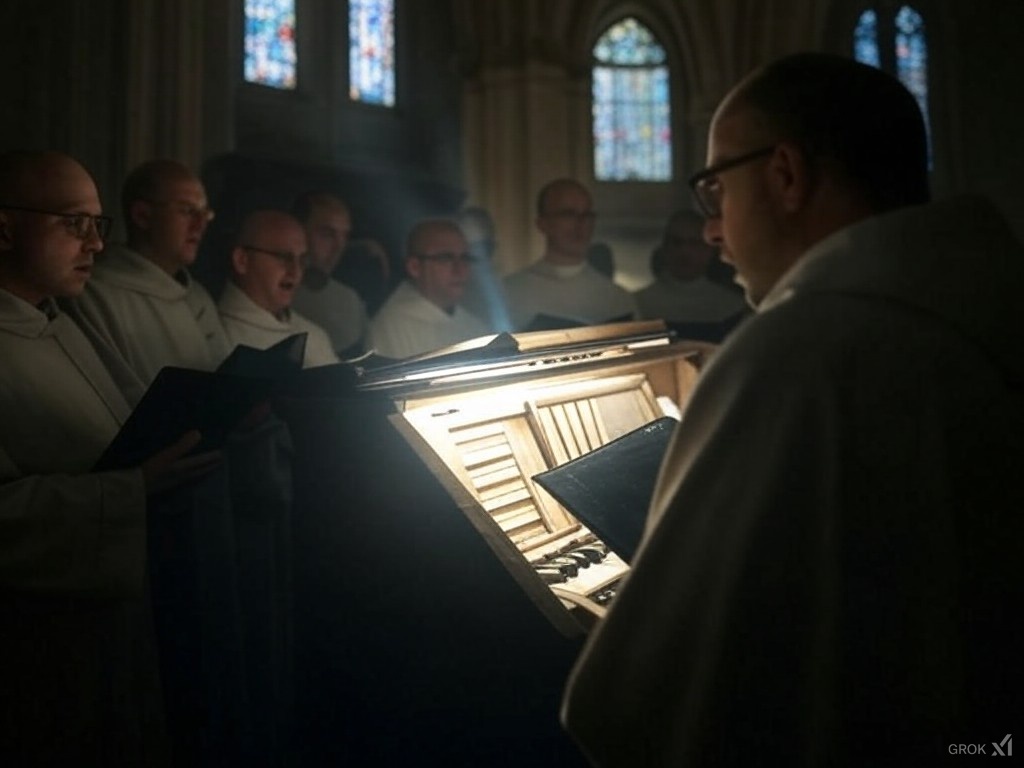A Day in the Life of a Gregorian Choir Singer
In the heart of an ancient abbey, where time whispers through the stone, the life of a Gregorian choir singer unfolds like a sacred manuscript, each day a new page in a story centuries old. Here, music is not just sound; it’s a prayer, a connection to the divine, a resonance with history.
The Dawn of Matins
The day begins before the sun does, in the quietude of Matins. This isn’t just waking up; it’s an awakening of the soul. The choir gathers in the predawn silence, their voices the first to break the stillness with ancient Gregorian chants. Each note sung in this hour is a thread connecting the singer to monks long past, carrying forward a tradition older than many nations.
Morning Rituals: Vocal Warm-Ups and Rehearsals
- Vocal Warm-Ups
The morning ritual continues with vocal exercises, but these are no ordinary warm-ups. They’re steeped in the art of choral techniques unique to Gregorian chant. The focus is on precision, breath control, and the purity of tone. Latin syllables are articulated with a reverence that only centuries of tradition can inspire. - Rehearsal
Following the warm-ups, the choir dives into rehearsal. Here, they refine the pieces for upcoming liturgical services or concerts. It’s a dance between tradition and interpretation, where the Gregorian repertoire is both honored and brought to life. Each session is a lesson in humility, learning to let the music lead, to serve rather than to perform.
The Midday Pause
As the abbey fills with light, there’s a shift to contemplation. This isn’t just a break but a time for spiritual rejuvenation. Choir members might meditate, read scriptures, or reflect on the spiritual significance of chant. It’s here, in the quiet, that one truly understands the purpose of their music – not merely to please but to pray, to connect.

Afternoon Practices and Study
- Individual Practice
The afternoon brings time for personal practice. Singers focus on mastering the complex neumes, the notation system of Gregorian chant. Each session is an archeological dig into the music’s past, unearthing nuances that modern notation can’t capture. - Learning and Study
Alongside practice, there’s an emphasis on study. Whether it’s exploring the history of Gregorian chant or the theological underpinnings of the texts, this learning deepens the connection to the music. It’s about understanding not just how to sing, but why.
Evening Vespers
As the day fades, the choir gathers for Vespers. The chants sung here take on a different hue, reflecting the day’s journey towards its close. The music resonates with a sense of completion, a collective exhale as the world outside darkens. This service is not just a performance but an act of worship, where the music is the language of the divine.
Community and Reflection
After Vespers, the communal life of the choir comes into focus. Meals are shared, sometimes in silence, fostering a sense of unity and introspection. Conversations might revolve around the day’s chants, spiritual insights, or the challenges of maintaining such an ancient tradition. This is where the choir becomes a family, each member a keeper of a musical heritage.
Nightfall and Compline
- The Final Prayer
The day ends with Compline, the last prayer of the day. Sung in the dim light of candles, it’s a moment of profound peace. Here, the chants are like lullabies for the soul, a gentle closing to the day’s spiritual narrative. Each note in Compline is a step towards rest, both physical and spiritual. - Reflection
After Compline, there’s time for personal reflection. Whether through journaling, prayer, or silent contemplation, singers ponder the day’s music, their place within it, and the timeless beauty of their calling.
A Life of Harmony
To be a Gregorian choir singer is to live a life of profound balance:
- Discipline: The daily commitment to vocal excellence and musical purity.
- Spirituality: Seeing music as a form of prayer, a bridge to the sacred.
- Community: A life shared with others on this unique journey, where each member supports and learns from the other.
- Legacy: Participating in the ongoing story of a musical tradition that predates many modern civilizations.
Through their voices, these singers not only keep a musical tradition alive but also offer a bridge to the sacred, making each day a journey through history, spirituality, and sound.
Conclusion
Each day for a Gregorian choir singer is an opportunity to touch eternity, to be part of a living history where each chant is a prayer echoed through the ages. Whether drawn by the art, the history, or the spiritual journey, the life of a Gregorian choir singer is one of unparalleled depth and beauty, resonating far beyond the abbey’s walls, inviting all who hear to reflect, to listen, to join in the chant.